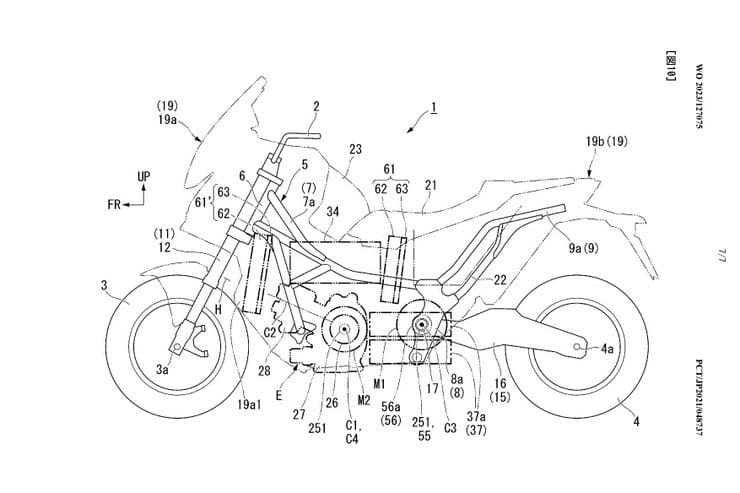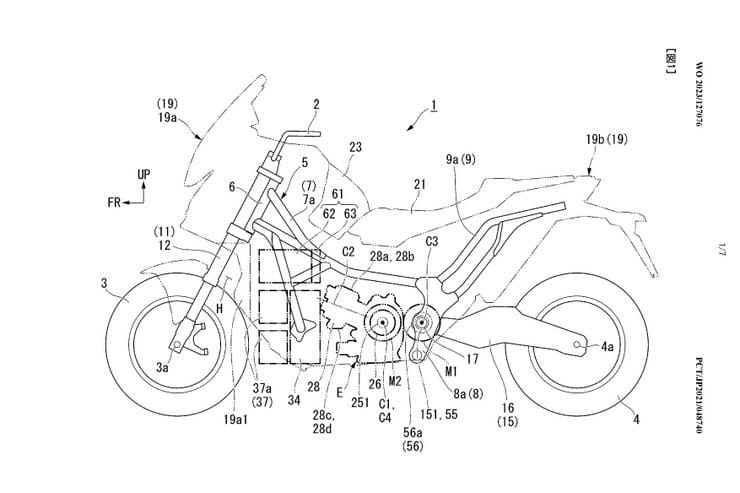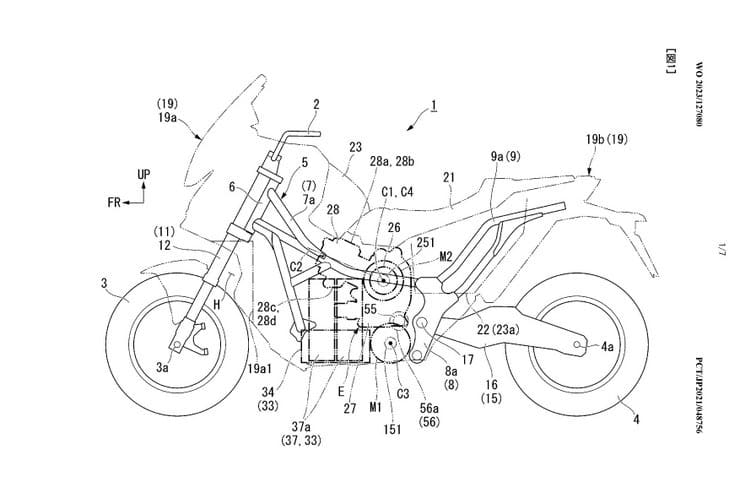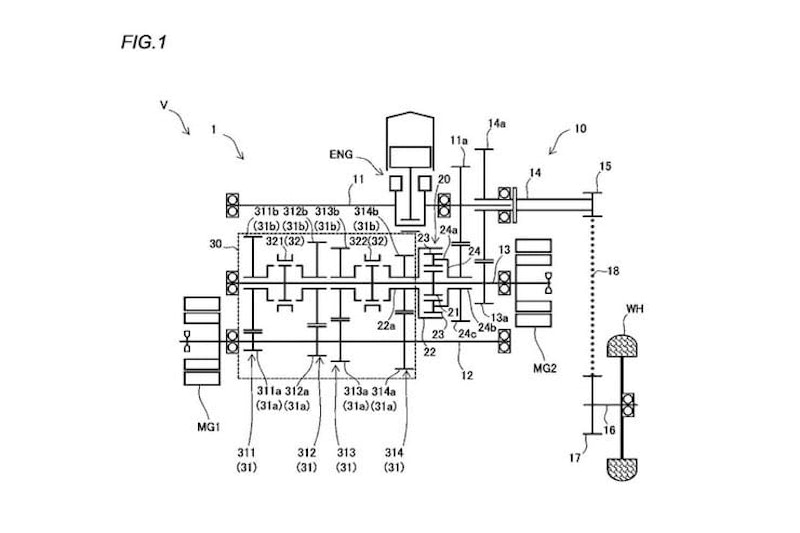Honda developing its first hybrid bike
By Ben Purvis
Motorcycle Journalist
11.08.2023
Honda is hard at work on its first ever hybrid motorcycle – combining a petrol engine with electric motors – and the company is taking a typically complicated approach to create a bike that aims to have unparalleled flexibility.
Several patent applications have been filed relating to the new bike, and although they show the outline of an X-ADV scooter wrapped around the hybrid running gear, the reality is that the system will be better-suited to a tourer or sports-tourer, combining range, performance and economy but at the expense of weight and bulk.
Unlike simpler hybrids – and at the moment it’s a field of one in the form of Kawasaki’s Ninja HEV, due to be launched as part of the company’s 2024 model range – the Honda doesn’t simply add an electric motor to boost an otherwise conventional engine and transmission. Instead the company has created a design that uses not one but two electric motors alongside its conventional petrol engine, and essentially has two transmissions – allowing it to operate in a variety of modes including as a pure electric, as a twist-and-go CVT and as a normal bike with multiple fixed gear ratios.
The transmission’s layout is shown here (above). It takes its inspiration in part from the OG hybrid car – Toyota’s Prius – by using a epicyclic planetary gearset to connect the two electric motors and the petrol engine together, foregoing a conventional clutch altogether.
It’s a bit hard to envisage, but all three power sources are connected to the epicyclic gears. The main electric motor/generator – labelled MG1 here – drives the ring gear (via another gear). The second electric motor/generator (MG2) is permanently attached to the central sun gear, as is the output shaft of the multi-ratio transmission. It’s also geared directly to the front sprocket, so whenever the rear wheel is turning, so is MG2.
Finally, the combustion engine (represented by a single piston in this drawing, but likely to be at least a parallel twin in real life) is geared to the planetary gear holder that sits between the ring gear and sun gear.
Here’s how each mode works:
EV Mode
The transmission in pure electric mode bypasses the combustion engine altogether
This is the simplest mode that the bike can run in – using nothing but the second electric motor (MG2) to power the rear wheel and running on battery power alone. In this mode, the combustion engine is switched off altogether, so the ring gear holder remains stationary. All the gears in the multi-speed transmission are disengaged.
eCVT Mode
The second mode is dubbed ‘eCVT’ and represents the bike’s twist-and-go hybrid setting, using a blend of power from both the combustion engine and the two electric motors, which also operate as generators to replenish the batteries when there’s excess power.
In this setting, the combustion engine is running and its revs are modulated by the speed of the main electric motor (MG1). The second electric motor, MG2, is permanently geared to the rear wheel so will always move at a speed that’s directly relative to how fast the bike is going. In this mode, the revs of the combustion engine and the balance of power coming from the petrol engine and the electric motors can be controlled infinitely by the bike’s power management electronics. In some states, the engine will provide all the power and be used to recharge the battery, in others the majority of the performance will come from the electric motors.
Geared Mode
While the eCVT setting might be able to do it all in terms of blending power from the engine and electric motors, it’s unlikely to provide the most engaging riding experience. Honda knows that motorcyclists like to use gears, adding an extra element of control, so it’s providing for that as well.
The gears in the transmission are relatively conventional, although there are only four rather than the usual six – presumably since the hybrid system offers a broader range of torque and the epicyclic gearset takes up part of the space that would normally be used by the remaining two gears.
On a normal bike, the input shaft would be driven by the engine, but here it’s connected to the main electric motor (MG1), which is also permanently geared to the epicyclic gearset’s outer ring gear. Like a normal bike, the transmission’s output shaft is geared to the rear wheel, but in this case, it’s also permanently attached to the central sun gear of the epicyclic gearset, and to the second electric motor (MG2). The combustion engine is still attached to the planetary gears between the sun and ring gears. That means in geared mode the ratios are fixed, giving a feeling more like a conventional motorcycle.
Power generation mode
The final mode is one that simply allows the bike to sit stationary, with the combustion engine running and charging the battery. Since the second motor/generator (MG2) is geared directly to the rear wheel, it can’t generate power while the bike is stationary, but because it’s not moving and the combustion engine is turning, all the power is diverted to the main motor/generator (MG1), which acts in generator mode to replenish the batteries.
The whole project still looks like it’s in a relatively early stage, but the large number of patents connected to it suggests it’s something that’s being seriously worked on. Since Honda plans to make its motorcycle business carbon-neutral by 2040, there’s a deadline for reducing emissions and getting a hybrid into production could bridge the gap for long-range bikes while better batteries or green alternatives like hydrogen-powered bikes are developed.
If you’d like to chat about this article or anything else biking related, join us and thousands of other riders at the Bennetts BikeSocial Facebook page.
Share on social media:



